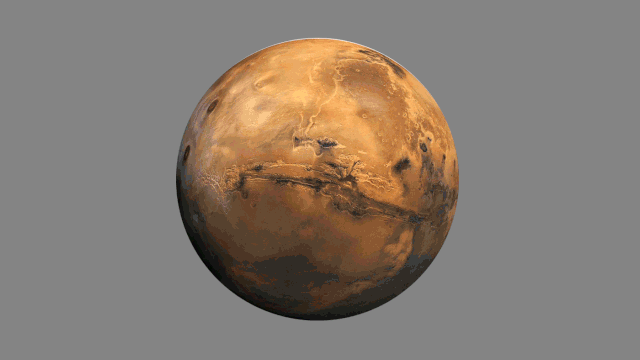There are at least two different types of marsquakes, new research suggests.
Seismologists at ETH Zurich recently re-created Red Planet temblors in the Swiss university's quake simulator, using measurements of two real marsquakes made by the supersensitive seismometers aboard NASA's Mars InSight lander.
The actual marsquakes InSight observed were faint and distant, so the scientists amplified the signals by a factor of 10 million to observe the effects in the lab. And the researchers were able to figure some things out even from this small dataset.
Related: NASA's Mars InSight Mission in Photos
"We are currently observing two families of quakes on Mars," Simon Stähler, a seismologist at ETH Zurich's Marsquake Service, said in a statement.
"The first quake was a high-frequency event more similar to a moonquake than we expected," he added. "The second quake was a much lower frequency, and we think this may be due to the distance. The lower-frequency quake likely occurred further away from the seismometer. Compared to the duration of earthquakes, both types of the marsquakes last longer."

Scientists have been able to characterize moonquakes thanks to seismometers placed on the lunar surface by Apollo astronauts. Moonquakes can last for an hour or more, far longer than temblors on Earth, which typically last just a few minutes at most.
Get the Space.com Newsletter
Breaking space news, the latest updates on rocket launches, skywatching events and more!
This duration disparity is caused primarily by the much higher water content in Earth rocks, according to lunar scientist Clive Neal of the University of Notre Dame in Indiana.
"Water weakens stone, expanding the structure of different minerals. When energy propagates across such a compressible structure, it acts like a foam sponge — it deadens the vibrations," Neal said back in 2006. When a quake shakes dry moon rocks, by contrast, "it just keeps going and going," he added.
There are other key quake differences between the two worlds as well. For example, Earth's crust is much more homogeneous than that of the moon, because our planet's active geology tends to meld everything together. On the geologically dead moon, by contrast, fractures caused by meteorite impacts persist for eons.
That can make it tough to trace a moonquake to its source.
"The heterogeneous lunar crust scatters seismic waves, similar to the reverberating echoes one might experience when calling out in rugged mountain terrain," John Clinton, who leads operations at ETH Zurich's Marsquake Service, said in the same statement.
Scientists don't yet have a great read on marsquakes; InSight has detected only a couple to date, after all. But the early analyses suggest that Red Planet temblors may be fall between those of the moon and Earth on the quake spectrum, ETH Zurich researchers said. For example, marsquakes appear to last from 10 minutes to 20 minutes.
The $800 million InSight mission landed near the Martian equator in November 2018 to map the Red Planet's interior in unprecedented detail. The seismometer suite, known as SEIS (Seismic Experiment for Interior Structure), was provided by the French space agency, CNES. ETH Zurich was a contributor to the SEIS.
InSight's other major instrument, a burrowing heat probe dubbed "the mole," has encountered some difficulty. The mole was supposed to bury itself at least 10 feet (3 meters) underground, but it got stuck about 12 inches (30 centimeters) down. Mission team members are trying to figure out what happened and how to get the mole on its way again.
- 7 Biggest Mysteries of Mars
- What Is Mars Made Of? | Composition of Planet Mars
- Occupy Mars: History of Robotic Red Planet Missions (Infographic)
Mike Wall's book about the search for alien life, "Out There" (Grand Central Publishing, 2018; illustrated by Karl Tate), is out now. Follow him on Twitter @michaeldwall. Follow us on Twitter @Spacedotcom or Facebook.
Join our Space Forums to keep talking space on the latest missions, night sky and more! And if you have a news tip, correction or comment, let us know at: community@space.com.

Michael Wall is a Senior Space Writer with Space.com and joined the team in 2010. He primarily covers exoplanets, spaceflight and military space, but has been known to dabble in the space art beat. His book about the search for alien life, "Out There," was published on Nov. 13, 2018. Before becoming a science writer, Michael worked as a herpetologist and wildlife biologist. He has a Ph.D. in evolutionary biology from the University of Sydney, Australia, a bachelor's degree from the University of Arizona, and a graduate certificate in science writing from the University of California, Santa Cruz. To find out what his latest project is, you can follow Michael on Twitter.
